
The Pilgrimage of the Tibetan Buddhist
Pilgrimage has long been an essential part of the Tibetan Buddhist way of life, and for more than 1,300 years, Buddhists from across Tibet have undertaken this ritual journey to sacred sites in Tibet, Nepal, and India as a major part of their devotion to Buddha. In Tibetan, the word for “pilgrim” is “gnas skor ba”, which loosely translated means “one who circles a sacred place.” The pilgrims, therefore, are defined by the act that they perform at the end of their long journeys. And while the pilgrims can get to the site of their “pilgrimage” by any means they see fit, the general rule is that one must walk on foot around the sacred site. And in the world of Tibetan Buddhism, it is even said that the merit one accumulates on the ritual walk is lessened if it is done on horseback.
Table of Contents
The First Pilgrimage Sites
Since Tibet was converted to Buddhism in the 7th and 8th centuries, Tibetan Buddhists have venerated the sacred places of early Buddhism in India and Nepal, many of which are mentioned in the histories of Buddha, Padmasambhava, and Santaraksita. Throughout the 11th and 12th centuries, many Tibetan Buddhists traveled the long journey to India to seek out these sacred Buddhist sites, and to receive teachings from the Indian Buddhist masters.
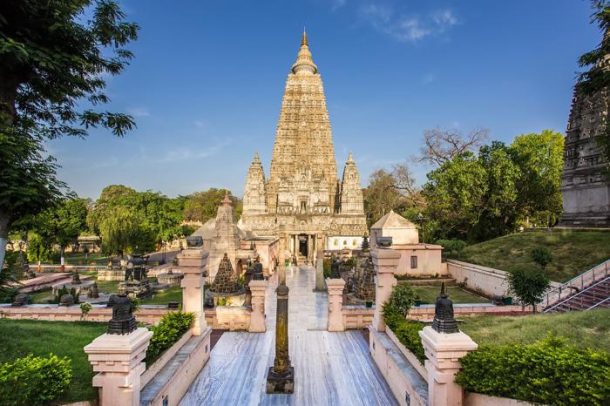
Bodh Gaya, Bihar, Indai
However, by the early 13th century, Buddhism and the practice in general dies out in India in favor of Hinduism, and was not revived for more than 600 years. Since the revival of the Buddhist sites in India, mostly due to archaeological excavations of such famous Buddhist sites as Bodh Gaya, where the Buddha reached enlightenment, travel to these sites in India has once again increased. Tibetans have also begun to travel to other sites linked to Buddhism in India, such as Tso Padma, or the Lotus Lake, which is said to be where Padmasambhava appeared from a lotus flower in the middle of the lake.
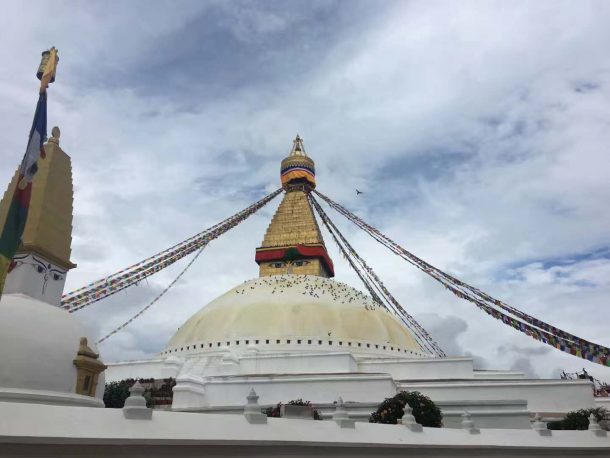
The stupa at Boudhanath has also long been a favored place of pilgrimage for Tibetan Buddhists, which lies in the Kathmandu Valley in Nepal. While the actual date of the construction of this unique religious site lies shrouded in myth and mystery, with various dates from the 4th to 7th centuries, it has been the site of Tibetan Buddhism in the Kathmandu Valley for centuries and lies on the ancient trade routes between Nepal and Tibet. The stupa is said to contain some of the remains of the legendary Kassapa Buddha.
Man-Made Pilgrimage Sites
In Tibet, pilgrimage sites come in two distinct forms, the natural and the man-made. The man-made sites include cities, palaces, monasteries, and temples, as well as stupas and C
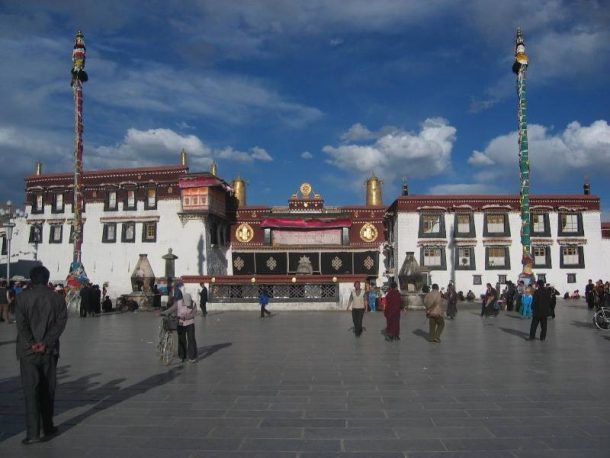
Monasteries have long been a popular pilgrimage site for Tibetan Buddhists, with the most famous being the monastery of Samye, the first Buddhist monastery in Tibet; the Tashilhunpo Monastery in Shigatse, seat of the Panchen Lama and one of the main monasteries of the Gelug School of Tibetan Buddhism; and the Ganden Monastery in Lhasa, founded by the founder of the Gelug School, Je Tsongkhapa.
Natural Pilgrimage Sites
Pilgrimage sites in Tibetan Buddhism are also found in the form of natural phenomena, such as the lakes and mountains that can be found across the Tibetan plateau. Sites such as Lhamo Lhatso, the lake where the lamas visit to discern the whereabouts of the next Dalai Lama, and the caves where Milarepa practiced his meditations, are sacred sites in Tibet that are natural sites. Many of the lakes and mountains in Tibet have some religious significance to them in Tibetan Buddhism.
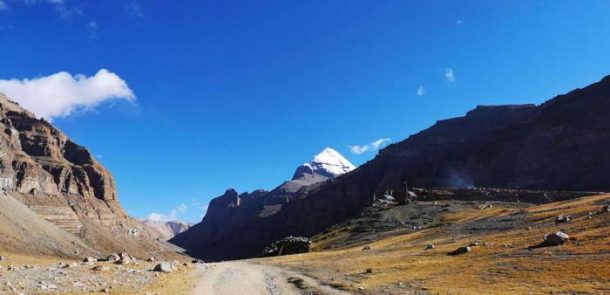
However, there is one place that stands above the rest as far as Tibetan Buddhists are concerned. Mount Kailash and Lake Manasarovar are the classic “lake and mountain” combination of Tibetan deities, where the mountain is considered to be the father deity and the lake to be the mother deity. Mount Kailash has been deemed as the most sacred mountain on the planet and is one of the most important pilgrimage sites in Tibet. Lying in the far Ngari Prefecture of western Tibet, this unusual black mountain is the scene of many pilgrimages, and the 52-kilometer pilgrimage route is one of the most famous in the world. Once believed to be a sacred site of the ancient Bon Religion, the mountain was won by Milarepa in a contest against the Bon Magician, Naro Bon-Chung.
A little way to the south of this great mountain lies the famous Lake Manasarovar, the most sacred of the Great Three Holy Lakes of Tibet. A freshwater lake that lies next to its twin, a saltwater lake in the shape of a crescent moon, Lake Manasarovar is believed to be the site where the mother of Buddha, Maya Devi, conceived him. For Buddhists and Hindus alike, the lake is believed to be sacred, and to drink from or bathe in the lake is said to wash away the sins of an entire lifetime.
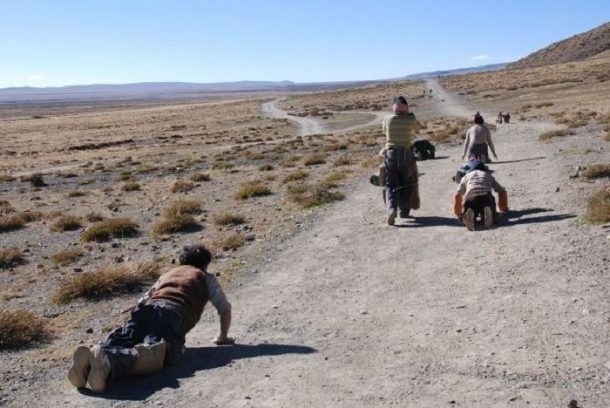
Conclusion
Pilgrimage in Tibet has always been a major part of the culture, which is so intertwined with the religion that it is impossible to tell where one ends and the other begins. And while the idea and practice of the pilgrimage in the ancient form is not always as popular in the urban areas with the youngsters of today, in the outlying provincial areas of Tibet, far from the western influence and modernization of Tibet, pilgrimage is still considered to be the most important journey one can take in one’s life. And for many, this pilgrimage can carry them halfway across the Tibetan plateau, seeking their merits for enlightenment and salvation from the constant rebirth of reincarnation.
Recent Posts
Can Tourists Visit Tibet?
Exploring the Beauty of Tibetan Handicraft
The Ultimate Guide to Tibet Tours, Travel, and Trekking Adventures
All Categories
- About Tibet
- book a Tibet tour
- Buddhism Practice
- Budget Tour
- China-Tibet Train
- Customized Tibet tour
- Historical Sites
- Hot Springs in Tibet
- News
- Photography in Tibet
- Tibet attraction
- Tibet Group Visa
- Tibet Motorcycle Tour
- Tibet Small Group Tours
- Tibet Tours and Tibetan Tour Guide
- Tibet Train
- Tibet Travel FAQs
- Tibet Travel Information
- Tibet Travel News
- Tibet Travel Permit Update
- Tibet Travel Prices Rises
- Tibet Trek
- Tibet Trekking Tour
- Tibet weather and climate
- Tibet Wildlife animals
- Tibet Winter Tour
- Tibetan Buddhism
- Tibetan Cultural Features
- Tibetan Culture and Poeple
- Tibetan Festivals
- What to see in Tibet


